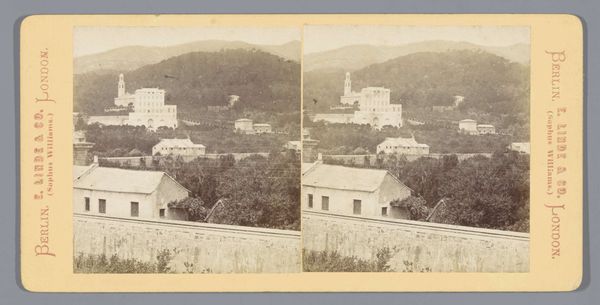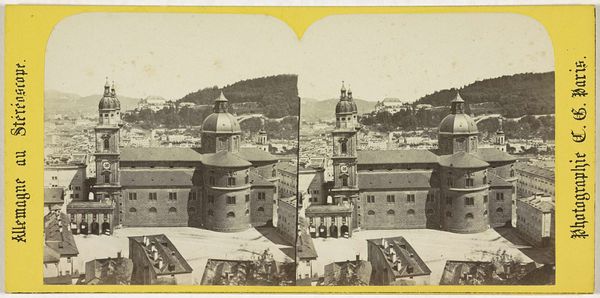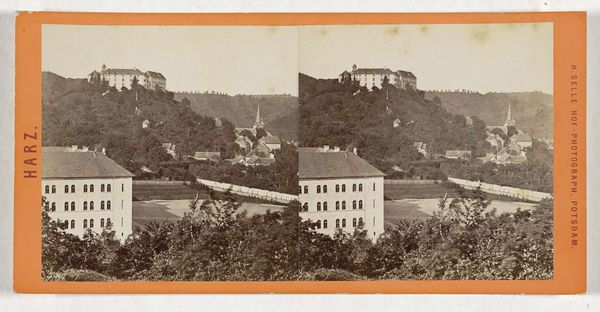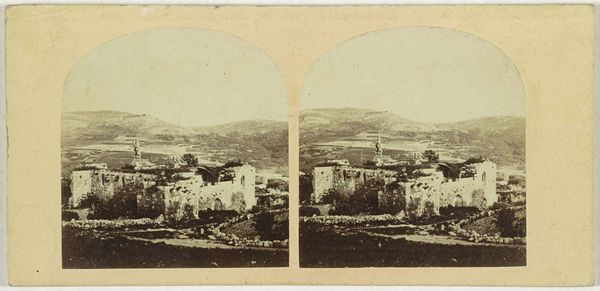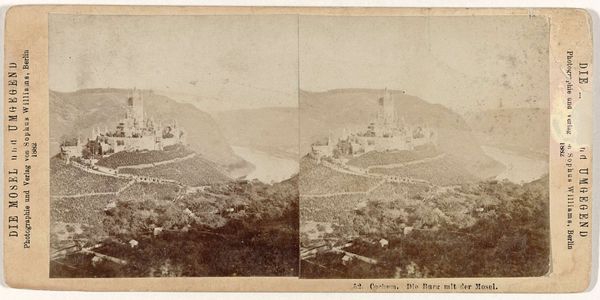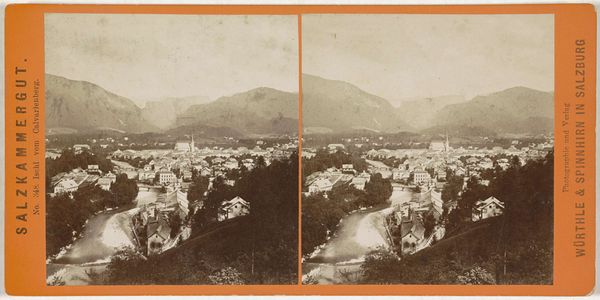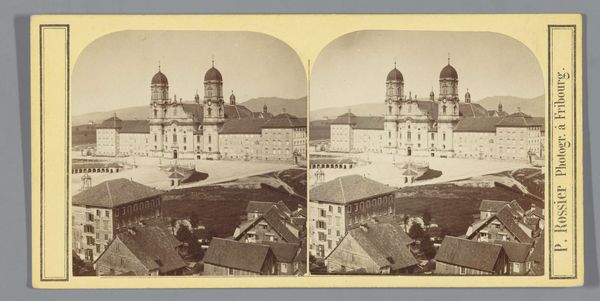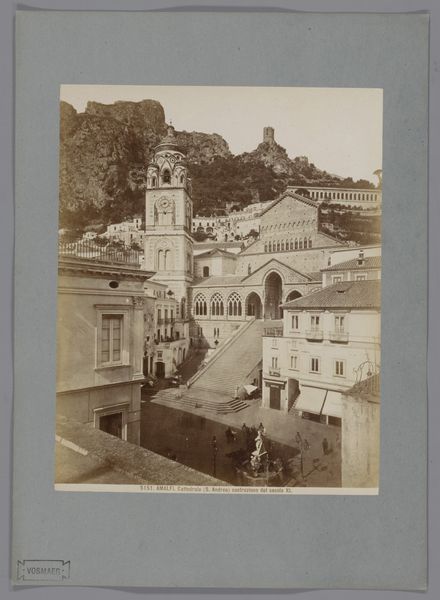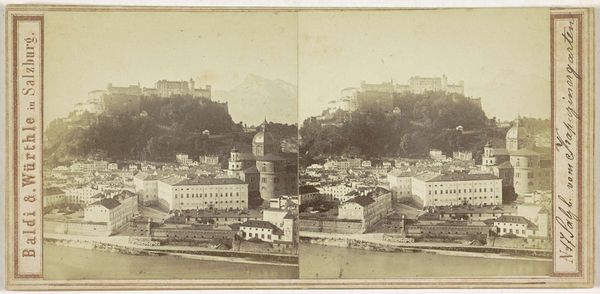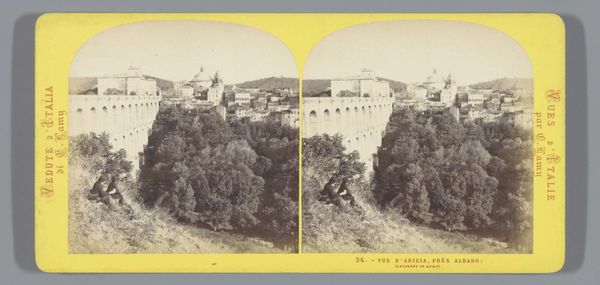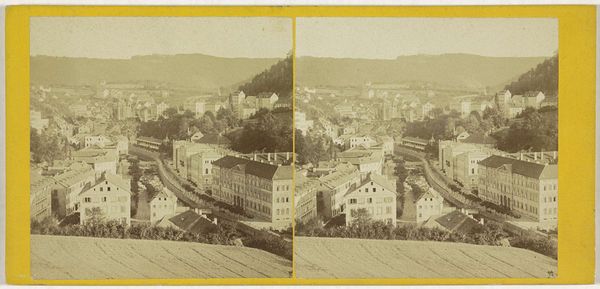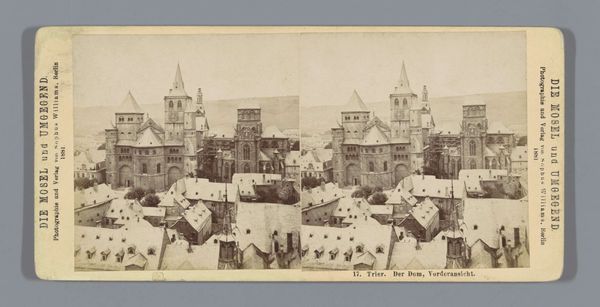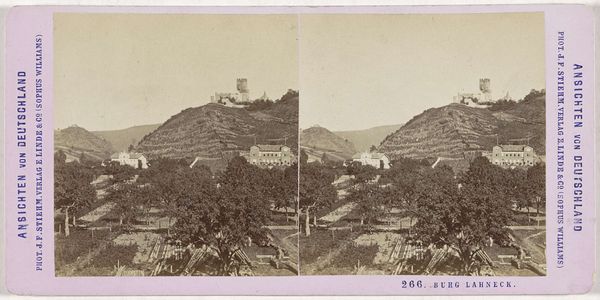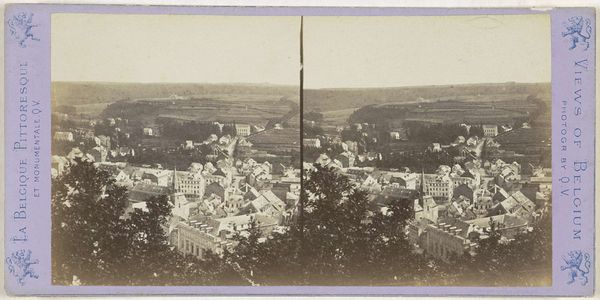
Dimensions: height 86 mm, width 176 mm
Copyright: Rijks Museum: Open Domain
Editor: This albumen print from 1877 by Sophus Williams titled "Bacharach en de ruïne van de Wernerkapel, Duitsland," depicts a German cityscape, shrouded in sepia tones. It feels quite romantic, even melancholic. What do you see in this piece? Curator: Beyond its aesthetic qualities, I see a powerful commentary on the social and political dynamics embedded in architectural ruins. The Werner Chapel was, allegedly, built to commemorate Werner of Oberwesel, whose death in 1287 was blamed on the Jewish community, leading to their persecution. The chapel's ruin, then, carries a heavy weight – a history of religious intolerance and violence. Do you think the choice to photograph the ruin, rather than the standing church, could be a conscious act? Editor: It definitely adds a layer of complexity. Perhaps Williams aimed to highlight the impermanence of even the most imposing structures, hinting at the failures of the ideologies they represent? Curator: Precisely. Romanticism often idealizes the past, but here, the decaying structure suggests a critical engagement with history. What do you think about how Williams used the then-modern medium of photography, traditionally used to document historical sites, but maybe here to question power? Editor: It makes me think about the role of art in shaping collective memory. This image is not just a depiction of a place, but an engagement with its difficult history. The fact that the image has survived for over a century invites us to revisit these conversations about the relationship between progress, representation, and power. Curator: Agreed, the image becomes an agent to ask the fundamental questions about how past biases inform the present and about the very human desire to engage and learn.
Comments
No comments
Be the first to comment and join the conversation on the ultimate creative platform.
